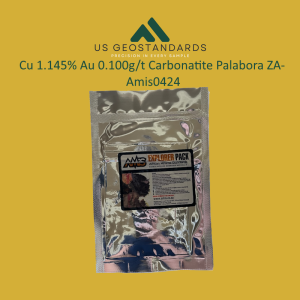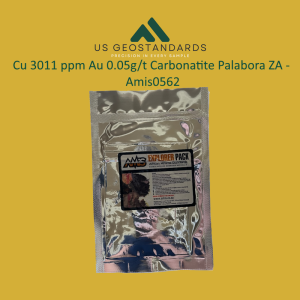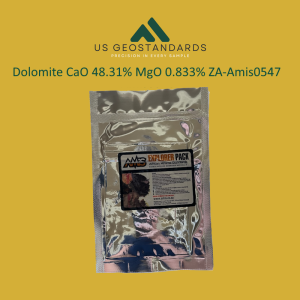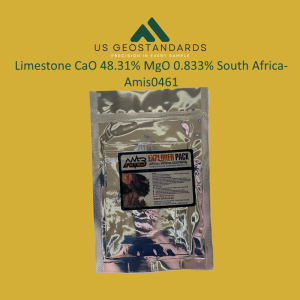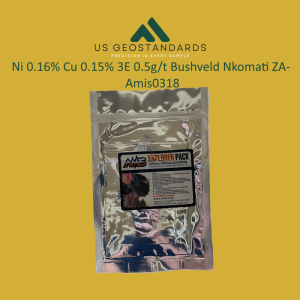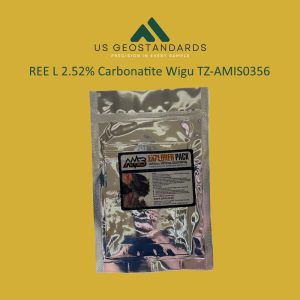Shop
Showing all 9 results
-
Copper Ores Price range: $48.50 through $388.83 Select options This product has multiple variants. The options may be chosen on the product page
Au 0.580 g/t Cu 76 ppm Epithermal PH – Amis0581
Mineralisation occurs within quartz veins, quartz calcite veins, quartz vein breccia, and the associated altered wallrock, stockwork zones and can also found in the volcanic and sedimentary host rocks. Gold is finely distributed associated with pyrite mineralisation
-
Copper Ores Price range: $66.00 through $763.00 Select options This product has multiple variants. The options may be chosen on the product page
Cu 1.145% Au 0.100g/t Carbonatite Palabora ZA- Amis0424
The most abundant mineral in this ore is Chalcopyrite and bornite found in the host rocks carbonatite and foskorite. Sulfides such as Chalcocite, vallerite, cubanite and pyrrhotite are present with by products titaniferous magnetite, apatite and uranothorite.
-
Copper Ores Price range: $66.00 through $763.00 Select options This product has multiple variants. The options may be chosen on the product page
Cu 3011 ppm Au 0.05g/t Carbonatite Palabora ZA – Amis0562
The host rocks are carbonatite and foskorite. Chalcopyrite is the most abundant ore mineral followed by bornite. Chalcocite is a subsidiary sulphide in the foskorite. Other sulphides are valleriite, cubanite and pyrrhotite (minor). Other important mineral by-products are titaniferous magnetite and apatite. Uranothorite is also recovered.
-
Dolomite Price range: $66.00 through $623.17 Select options This product has multiple variants. The options may be chosen on the product page
Dolomite CaO 25.1% MgO 16.8% ZA- Amis0547
Dolomitic rocks contain more than 50% of both calcite and dolomite minerals in which dolomite is more abundant than calcite. Theoretically, pure dolomite contains: CaO: 30.4%, MgO: 21.8%, CO2: 47.8%. Impurities in dolomite include clay minerals and chert.
-
Limestone Price range: $66.00 through $763.00 Select options This product has multiple variants. The options may be chosen on the product page
Limestone CaO 48.31% MgO 0.833% South Africa-Amis0461
Limestone is an organic sedimentary rock that forms from the accumulation of shell, coral, algal, and fecal debris. It can also be a chemical sedimentary rock formed by the precipitation of calcium carbonate from lake or ocean water.
-
Copper Ores Price range: $66.00 through $763.00 Select options This product has multiple variants. The options may be chosen on the product page
Ni 0.16% Cu 0.15% 3E 0.5g/t Bushveld Nkomati ZA-Amis0318
Economic sulphide mineralization occurs as disseminations, blebs and stringers in three zones, namely the Basal Mineralised Zone (BMZ), in the Basal Gabbro; the Main Mineralised Zone (MMZ), in the Lower Pyroxenite, and the Chromititic Peridotite Mineralised Zone (PCMZ), in the Chromititic Peridotite.
-
Copper Ores Price range: $66.00 through $763.00 Select options This product has multiple variants. The options may be chosen on the product page
Ni 0.5% Cu 0.2% 3E 1.1g/t Bushveld Nkomati ZA-Amis0320
Economic sulphide mineralization occurs as disseminations, blebs and stringers in three zones, namely the Basal Mineralised Zone (BMZ), in the Basal Gabbro; the Main Mineralised Zone (MMZ), in the Lower Pyroxenite, and the Chromititic Peridotite Mineralised Zone (PCMZ), in the Chromititic Peridotite.
-
Geology Reference Materials Price range: $66.00 through $763.00 Select options This product has multiple variants. The options may be chosen on the product page
REE L 2.52% Carbonatite Wigu TZ-AMIS0356
This material is bastnasite-rish with minor phases of synchisite, parasite, monazite and apatite. The main rare earth minerals present are the light rare earths such as Cerium, Lanthanum, Neodymium, Praseodymium, and Samarium. Some heavy rare earth elements such as Europium and Gadolinium are also present.
-
Geology Reference Materials Price range: $66.00 through $763.00 Select options This product has multiple variants. The options may be chosen on the product page
U 3423ppm Phosphatic sandstone Bakouma CF-Amis0055
Phosphates occur in the form of microcrystalline, carbonate-substituted fluorapatites that can make up as much as 50% of the rock. The main uraniferous phosphate minerals appear to be autunite and torbernite.


